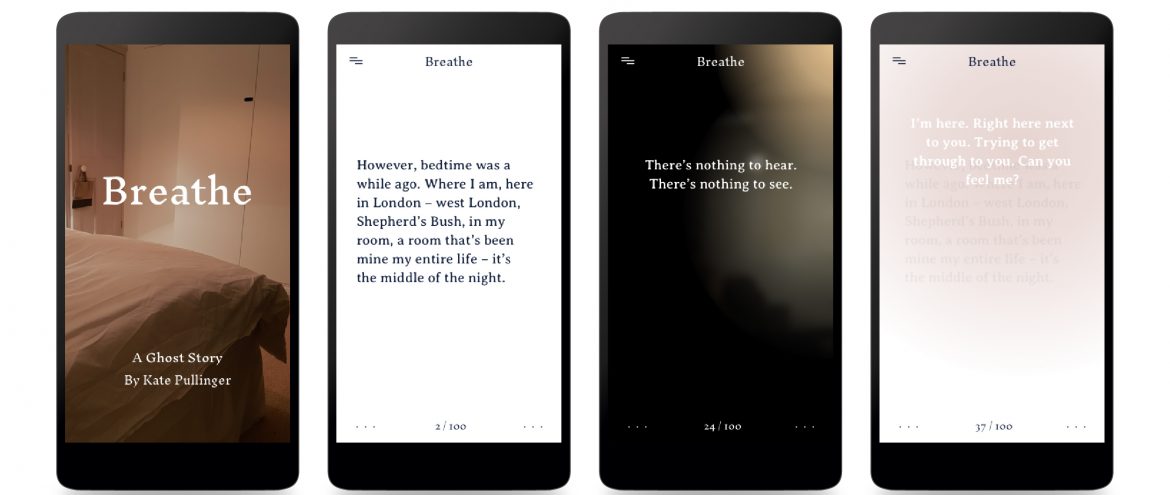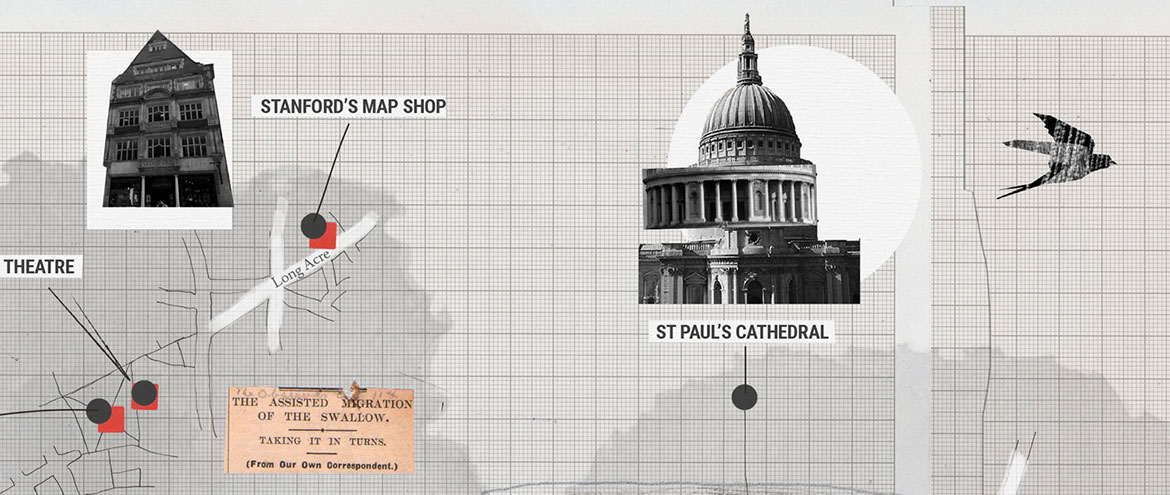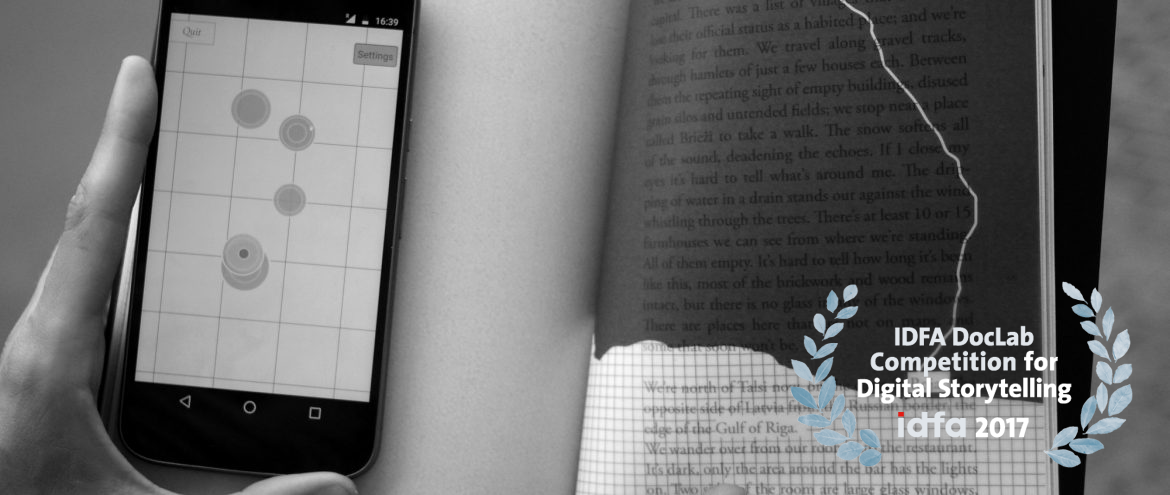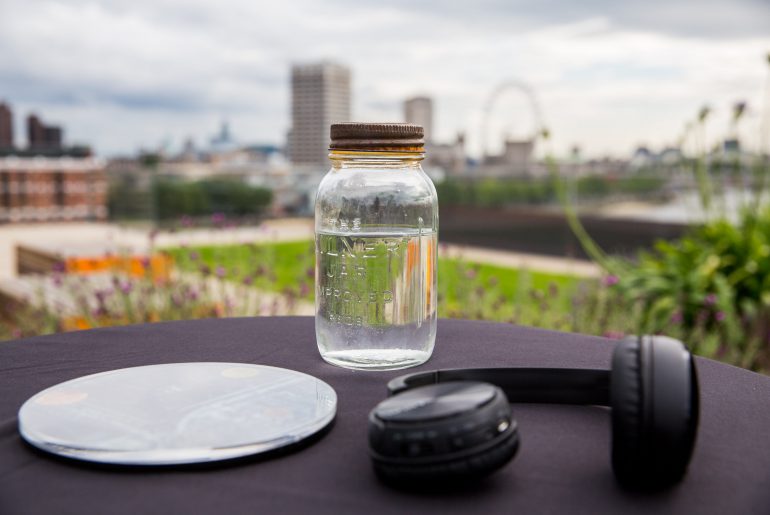As part of our second research seminar on September 22 (which, by the way, was an excellent conversation between the whole team and their deliciously complementary approaches), I wanted to surface some tensions in the concept of ambience that I hope we can work through in our research programme. We might begin from the everyday use of the idea of ambience, as something like atmosphere, a quality of place that is sensed and felt as a background quality. That is not to assume that an ambience is passive; a cathedral, a dancehall, or a shopping mall will all have distinct ambiences that will produce different repertoires of embodied behaviours. Most commentators also point out that the term derives from ‘ambire,’ the Latin for to ‘go around.’ So an Ambient Literature might be a literature that ‘wraps around us’ like an ambience. A literature that has a background quality. But how…
Experiment i
To announce the launch of the Ambient Literature project, the project team created the first in a series of small experiments to accompany the three commissions contained within the project programme. The first of these – Experiment i – explored the history of the area surrounding Carmelite House, a site on the bank of the River Thames, one steeped in mythology, religion and murder. Now the home of Hachette UK, Carmelite House served as host for the Ambient Literature launch event. The work was premiered on June 30th in London, and made use of the audience’s presence as guests at Carmelite House, offering them an opportunity to experience situated storytelling; a curtain-raiser for the two-year programme of work. Invitations to the launch contained either brick dust, river water or fragments of a torn bible. On arriving at the launch, the audience could choose to listen to three audio narrations, each…
Kate Pullinger on Writing for Ambient Literature
As I move forward with planning the creative work I’ve been commissioned to write for the Ambient Literature project, I find myself thinking about the affordances of the smartphone and how important this device has become to many of us, the multiple ways in which it is now a key piece of technology in our daily lives. For this project, I’m interested in the ways in which the smartphone has become a technology for reading. I read on my phone all the time: I read social media feeds, I read journalism, I read academic papers, I read reports and analysis. But I don’t read a lot of long form prose on my phone. I remain fond of print books and have this rather pointless ‘rule’ of buying print when I think the book might be something I’ll want to keep — novels I’ll re-read, non-fiction I’ll want to refer to again…
Exploring the Field
Following on Jon Dovey and Tom Abba’s reports from last week’s ambient literature research meeting, Amy Spencer gives an account of where ambient literature can be situated within a field of other works and research. * * * Knowing where you are not can help you find out what you are. For the past few weeks, I have been exploring the field of ambient literature. I have followed ideas through the writing of countless writers and researchers, trying to see what lies around us as we build our understanding of this new literary field. To guide me, I have been imagining ambient literature as being at the centre of a map. Around us are fields such as locative storytelling, psychogeography, games, spatial theory, site specific art, performance and the history of the book. I am trying to find the points at which these overlap, where the ideas and practices blur…
What is a book and what does it have to do with Ambient Literature?
Below is Tom Abba’s response to the first ambient literature research team meeting. Read more about it from Jon Dovey and Amy Spencer. * * * I had a beer with Duncan Speakman last night. Duncan’s starting to put the shape of his commission for Ambient Literature together and amongst the vagaries of location responsive storytelling, he asked me a question: I still don’t understand what the book has to do with Ambient Literature? And I paused. I thought (as an academic involved in a two year research programme is supposed to do) and then I talked about Ian Gadd’s presentation earlier that afternoon. What is a book? On the one hand, that’s an easy question to answer. A book is a collection of pages (sometimes collected in sections) stitched or glued together and bound with board (or card) to provide a cover. It’s a codex, a container for ideas.…
Ambient Book History
Below is Jon Dovey’s response to the first ambient literature research team meeting. Tom Abba and Amy Spencer also provide reflections on the meeting. * * * At a meeting at the Pervasive Media Studio yesterday, Ian Gadd gave us his first overview of how his particular field of research touches on the Ambient Literature project. Part of Ian’s research profile is into the history of the book – he introduced Leslie Howsam’s (1) idea that a book is how people give material form to knowledge and history. He offered Howsam’s excellent framework as a way that we might be able to test our ideas about how Ambient Literatures are constituted. Taking Howsam’s aspects of the book, Ian ran through several great historical examples that made this connection explicit: To start, books can be understood as a text, which may have specific relationships to place, such as John Stow’s 1598…
Launched!
We were lucky to have great weather last week for the official London launch of the Ambient Literature project. Looking out over the Thames from the roof deck of the Hachette offices, a great crowd of authors, publishers, academics and media turned out to help us kick off the project. We were thrilled to be joined by representatives from our technical development partner, Calvium, and by the three authors who will be making new works to help us explore the landscape of ambient literature. In addition to all the great conversation, we got to hear from the project’s co-investigators, Jon Dovey, Tom Abba and Kate Pullinger, as well as get a preview from the three authors about what they’ll be working on over the next two years. Also on display was the first ambient literature experiment set up to give atendees of the launch an early taste of what ambient literature can…
Ambient Literature in The Bookseller
To mark the launch of the Ambient Literature project, Kate Pullinger wrote a piece for The Bookseller, the UK’s primary trade publication for the publishing industry. The article is a great read that helps to make connections between Ambient Literature and the publishing industry. One of the on-going challenges for anyone working on digital innovation and literary forms is that emerging publishing models do not coincide with existing models within the publishing industry. Digital innovation in the publishing industry tends to focus on work-flow, book formats and marketing, whereas for many creative practitioners, including the team involved in Ambient Literature, digital innovation is about exploring hybrid forms and finding ways to create immersive narrative experiences, new ways to connect readers with stories. But one of the goals of the Ambient Literature project is to open up a discussion with the industry – we have much to gain from talking to each other.…
Introducing Ambient Literature
In early 2014, a meeting of interested parties was convened at the Pervasive Media Studio in Bristol’s Watershed. Between us, we had a strong track record in digital projects, especially those that were informed by books and literature, and the agenda consisted of two words: ‘Ambient Literature.’ Discussion was lively, informed, and optimistic, and a year later, we submitted a proposal to the AHRC, sat back and crossed our fingers. Truthfully; we don’t know what Ambient Literature is. We’ve started to map the territory, to define by identifying borders and by testing the edges. It’s important to note though, that we don’t want to reduce the idea to something tight and defined, rather our intention is to open it up, so show by doing, making and thinking. Art is, I read recently, about panning for gold, finding glints of elemental truth within the noise of the world. We do know…
About the Project
What happens when data aspires to literary form? What does it mean when the place where you’re reading becomes the stage for the story? How might writing, reading and the idea of the book itself change when we use technology to design stories, rather than just present them? Ambient Literature is a two-year collaboration between the University of West England, Bath Spa University, and the University of Birmingham, established to investigate the locational and technological future of the book. Funded through a grant from the Arts and Humanities Research Council, the project is focused on the study of emergent forms of literature that make use of novel technologies and social practices in order to create robust and evocative experiences for readers. Launched in London, Bristol and online in June 2016, the project draws on the REACT Hub’s experience working with creative industries in order to produce three experimental projects from three different authors.…





